Physical Address
304 North Cardinal St.
Dorchester Center, MA 02124
Physical Address
304 North Cardinal St.
Dorchester Center, MA 02124
Immense and leafy jungles where enigmatic green mountains emerge, with that mysterious air imprinted by rain and fog. Paradisiacal beaches yet to be exploited, the remains of ancient civilizations in lost cities, pagodas and temples of various religions that live together in peace.
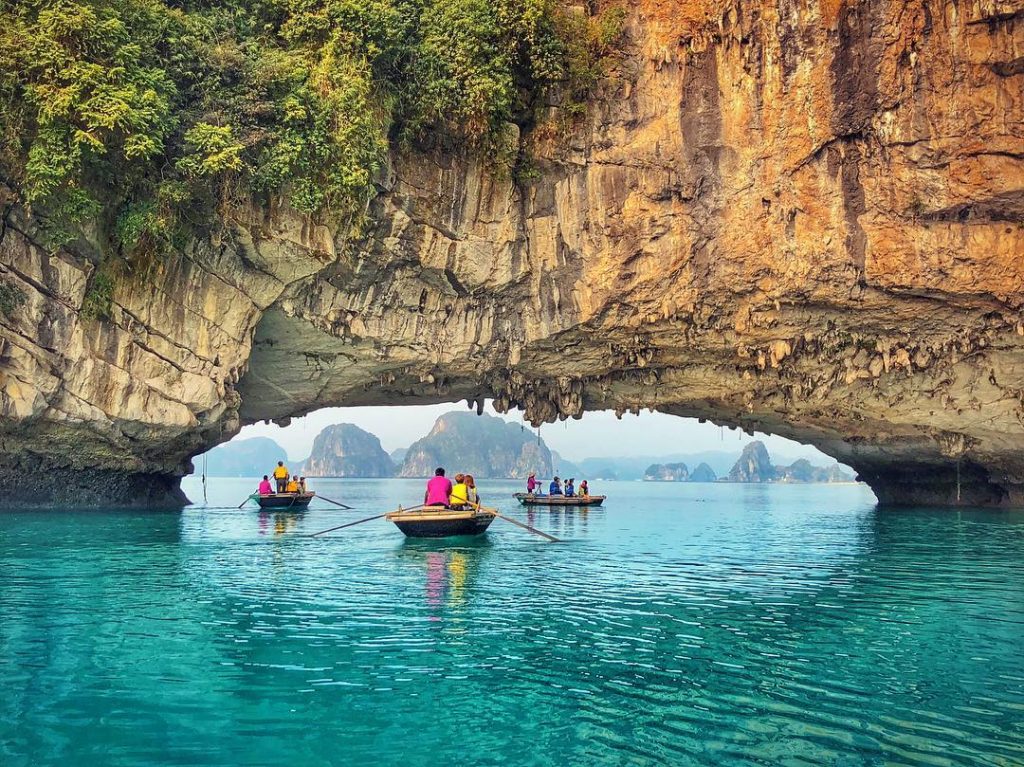
A culture and history impregnated with the Chinese tradition that occupied the country for almost 1. 000 years, modernism and French architecture, two big and monstrous cities, tiny and idyllic villages among rice fields. A gastronomy that makes your palate explode with flavours, the communist tradition mixed with an opening to capitalism more and more evident and a friendly, nice and smiling population.
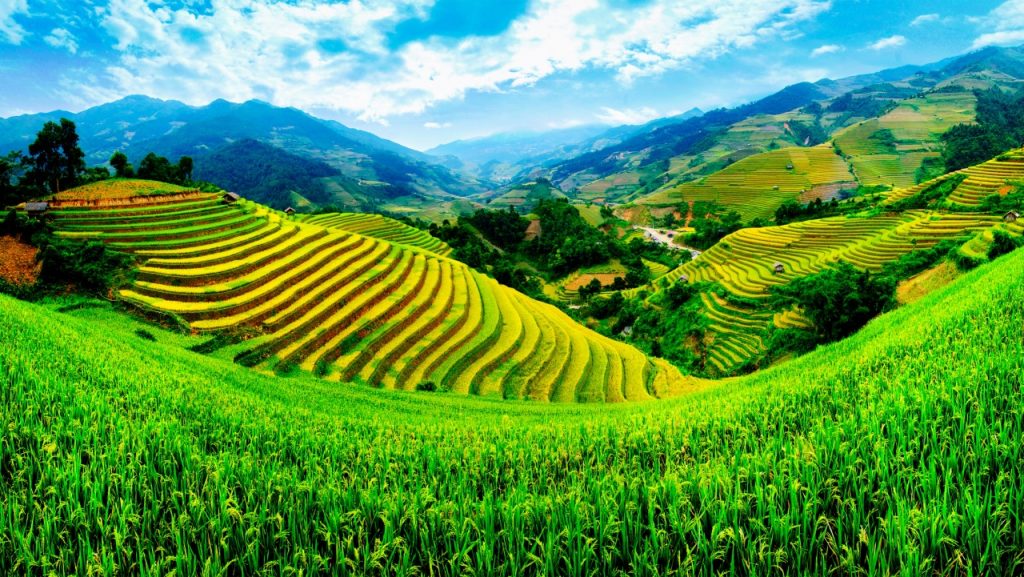
Yes, this place exists, and it’s called Vietnam.
After decades and decades of bloody wars, first against the French who occupied Vietnam from 1859 to 1954 and whose legacy can be seen in the architecture of the big cities, then between the two parts of the country with the intervention of the Americans in the infamous and famous Vietnam War during the 60s and 70s, today the country has emerged from its ashes as a nation in search of prosperity, thanks mainly to tourism and an opening of its markets, moving away from the most radical communism.
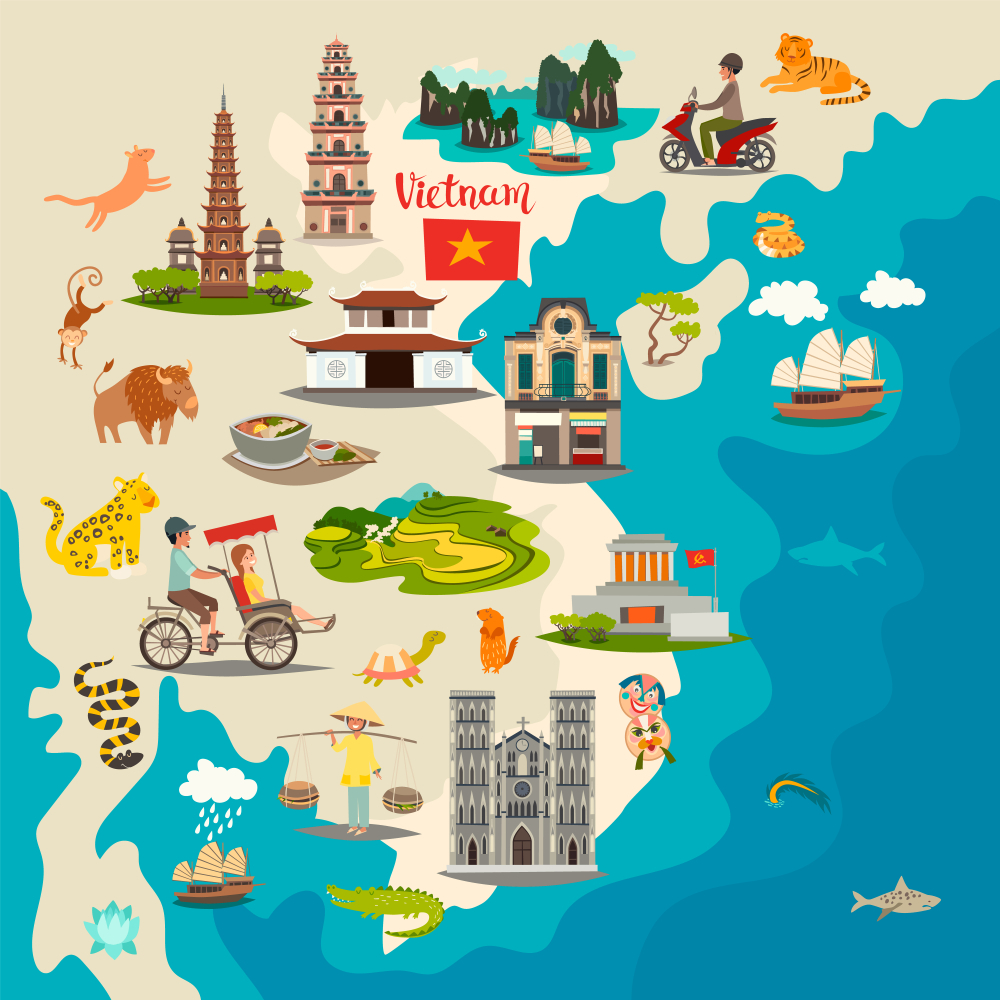
When travelling to Vietnam, the country is usually divided into three zones, the northern part dominated by Hanoi, one of the great wonders of the world: Halong Bay and the Red River Delta, the central zone with its beautiful beaches, the imperial city of Hue, the vast Danang and the fairytale city: Hoi An, and the southern zone where Ho Chi Minh and the Mekong River Delta are located.

Vietnam is located at the southeastern tip of the Indochina peninsula, washed by the warm waters of the China Sea. It borders Laos and Cambodia to the west and China to the north. The silhouette of the country is curious because it is long and narrow, having at its narrowest point only 50 km and 1650 km from south to north.
As far as the climate is concerned, well, talking about the climate in Vietnam is crazy. In general it is hot and humid (over 84% humidity almost all year round). It is a tropical and monsoon climate, to some extent unpredictable because there are also many differences between the north and south of the country, you can find at the same time a lot of sun and heat in the south, while in the part of Hanoi is raining and cold.
The monsoon season is usually between May and October, causing heavy rain. November to February is the dry season, and the hot season usually coincides between February and April, although, friends, climate change makes this more unpredictable every day and the seasons are intermingled and it is impossible to define patterns.
In general, the southern part of Vietnam is hot and humid, and it usually rains quite a bit during the rainy season. The central zone receives typhoons between July and November, and in winter it is cold. In the north, winters are quite cold between November and March, and it can even snow, and summers are very hot.
South: high temperatures all year round, between 21º and 35º. Rains from May to October. Best months: December to March.
Center: temperatures between 18º and 35º. Rains between September and December. The best months are summer.
North: temperatures between 15º and 32º, although in the Sapa area they can drop to 0º in winter. Rains between May and September. Best month: November.
After this stream of information, try to avoid the typhoon season and nothing else, if you are going to travel around the country, be prepared for hot, cold and rain…this is Vietnam and it is part of its charm!
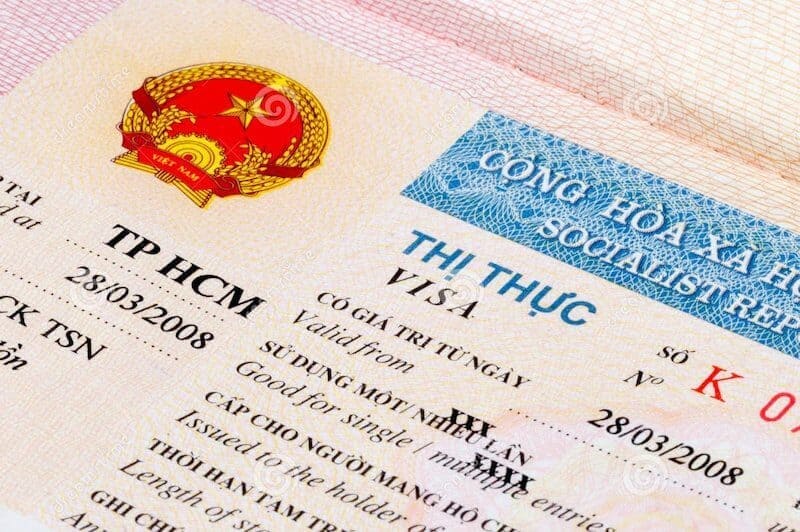
Vietnam Visa on Arrival
Vietnam Visa in Australia
Vietnam Visa for Canadians
Vietnam Visa in Hong Kong
Vietnam Visa for Indians
Vietnam Visa for Malaysians
Vietnam Visa for Singaporeans
Vietnam Visa for US Citizens
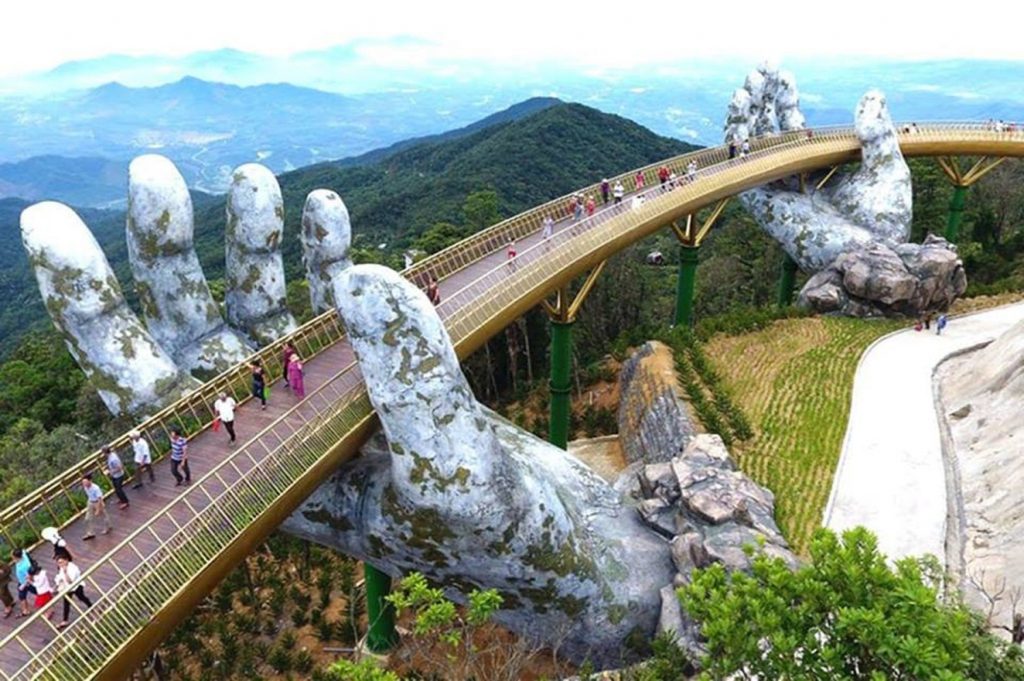
In this map you can see those interesting points along the country, cities, towns, beaches and natural places, which we describe in the following list and explain in future articles.
Big cities: Ho Chi Minh City/Saigon in the far south and Hanoi in the north.
Medium-sized cities: Hoi An and Hue in the center of the country. If there is time left over Da Nang.
Nature sites: In the north, Sapa, Halong Bay and Ninh Binh Nature Park (all 3 places accessible from Hanoi). And in the south, the Mekong Delta near Saigon.
Beach areas: Phu Quoc Island and, near Saigon, Mui Ne. In the area of Da Nang, My Khe Beach, Cua Dai Beach in Hoi An.
Special places: the Cu Chi tunnels in Saigon and Da Lat, the ruins of My Son Shrine, next to Hoi An.
If time is spare: Quy Nhon, Nha Trang, Phong Nha Ke Bang National Park and Ban Gioc Waterfalls on the border with China.
To help you plan your trip, we have some itineraries to get you started.
South Vietnam
Central Vietnam
North Vietnam
[pt_view id=”e4f4f4bk7d”]
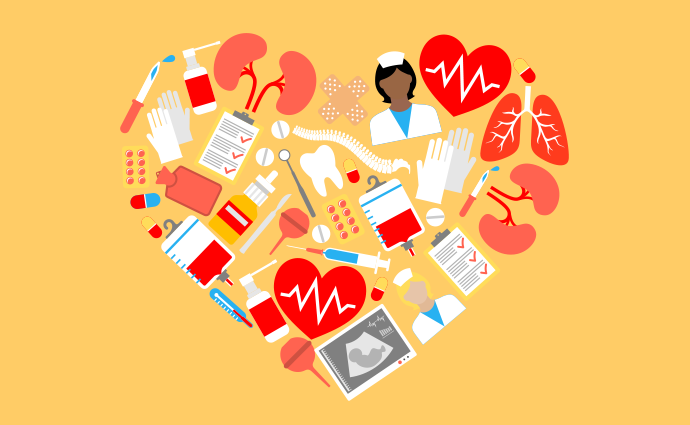
The WHO recommends vaccinations for hepatitis A and B, tetanus, rubella , measles, mumps, diphtheria and typhoid. Malaria is almost non-existent and Dengue Fever, as in most of Asia, is a risky destination.
My recommendation is to take a minimum of care, without hysterics, buy a mosquito repellent, take a mosquito net and be careful with water, ice and fruits. But in general I have to say that it is not a very dangerous country in that sense.
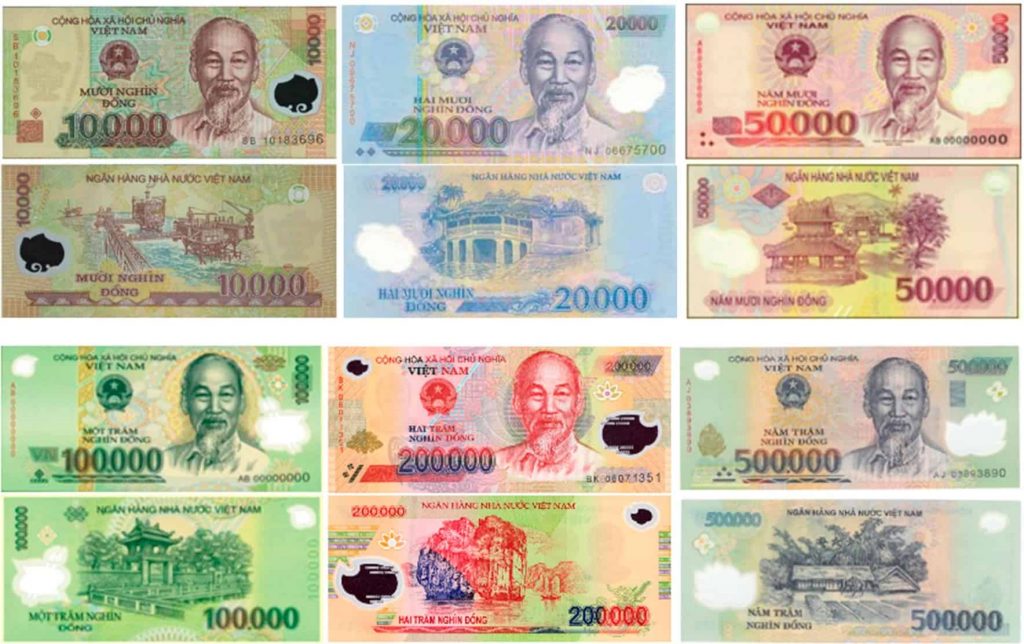
The official currency of Vietnam is the Dong (VND) and the exchange rate in January 2020 is 1 Euro = 25,000 VND (+/-). The US Dollar (US$) is accepted throughout the country for payment, as well as in exchange offices.
There are many exchange offices in almost all tourist places and they also change money in hotels and travel agencies, which are in the thousands. The exchange rate is usually similar, so don’t go crazy wondering why you won’t get much difference.
Bank cards are accepted in many places and in almost all mid-high range hotels, as well as in those more modern restaurants. However, all prices are increased by a 3% commission for the use of the card, although as the prices are so low, it is worth using the card for its convenience.
It is also easy to find ATMs especially in the more touristy areas of Vietnam.
The only “problem” with the Dongs, are the large amounts of “zeros” that you will carry as there are 500,000 VND, 100,000, 50,000, 20,000, 10,000 and 5,000 VND bills. There are hardly any coins or they are not used.
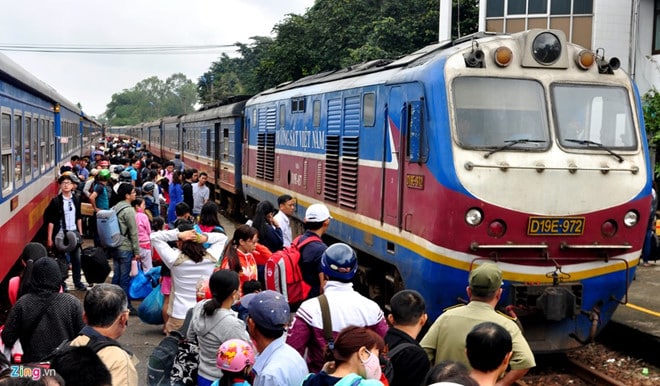
Vietnam’s transport network is improving by leaps and bounds. There is a large railway line linking the 1,600 km south to north from Ho Chi Minh City to Hanoi, called the “Reunification Express”, symbol of the Vietnamese union. The trains are relatively comfortable and punctual.
There are also bus lines called “Sleeping bus”, where you can go completely lying in a single bed. Try to book the ones from the “Hanh Café” company because they are better company, they are newer and more serious. There are other companies that are much more shady and provide horrible services.
There are also several low-cost airlines with very good prices: Vietjet Air, Vientam Airlines, Jetstar Pacific Airlines or Vietnam Air Service Company.
To book train or bus tickets, I recommend the Baolau website. It’s a search engine for transport in Asia, which shows you the best options for moving between cities and you can also make the reservation and payment there because it is completely safe. They will send you an email with a “.pdf” document with the tickets (it’s a good idea to print it, although they hardly look at it and there were people who only carried it in their mobile phones).
Another good page to look for transport is 12go.asia and the official page Vietnam Railways. Also you have all the information of transports in this web, that I consider the one that has more information of the whole world.
Try to book the highest category of train cabins, because the price difference is not much and it is quite noticeable. These cabins have 4 beds, but normally they are not full and if you go 2 or 3, you will surely go alone.
In general, the experience is good, the trains are very punctual and the beds are good, they are comfortable and you can sleep, but I have to say that in one of the journeys the train was a bit older, there were quite a few cockroaches and the air conditioning was insufferable from how cold they were. For long journeys, the best option is to take the night trains and save time travelling at night. For those who prefer the bus, the sleeping bus, is quite comfortable too, you go lying down and you can sleep. It’s a matter of taste.
It is quite easy to travel the country from north to south on Coastal Highway 1 or on the railway line between Ho Chi Minh City and Hanoi. The most inaccessible area is the central highlands and the northern villages of Vietnam, where there are minibus services or you can rent a car or motorbike.
In the big cities there is a transport service type Uber or Cabify, which in Vietnam is called Grab and also works with a mobile app.
There are also private transport services that you can hire in hotels and agencies. They are more expensive, as they are small vans that take you from hotel to hotel.
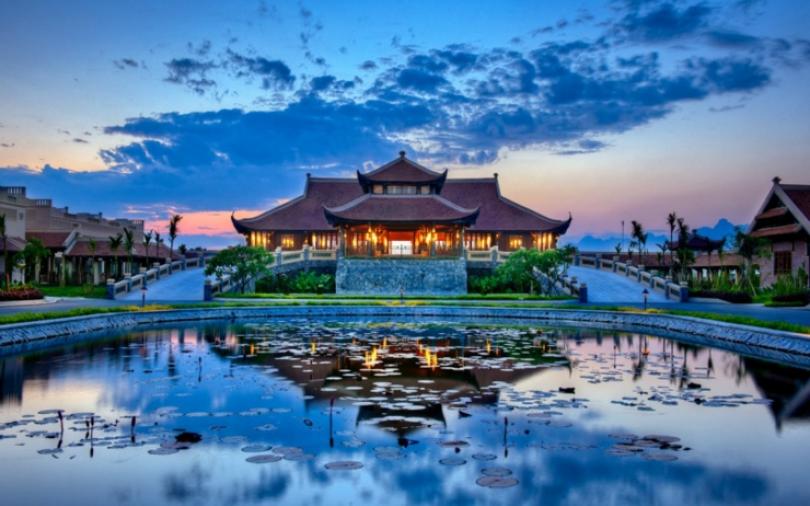
I don’t usually recommend hotels, but in the case of Vietnam I’ll make an exception. In each of the articles with the route through the country you will be able to check some hotels that I knew and that were spectacular.
In general the offer is wide, being able to stay for very little (3-5 euros per person/night) in decent hotels and for 10 euros per person/night in new hotels, with swimming pool, with wide and comfortable rooms, and the best of all, with amazing breakfasts, in some cases they are almost meals since to the usual breakfast you usually add a menu where you can choose freshly made noodles, pho or rice with some Vietnamese specialty.
In general, the hotels are very good value for money. I booked them all through Booking, but I used to book only one night and the rest at the hotel itself since they give you a discount for the commission they save.
[pt_view id=”8b63426arc”]
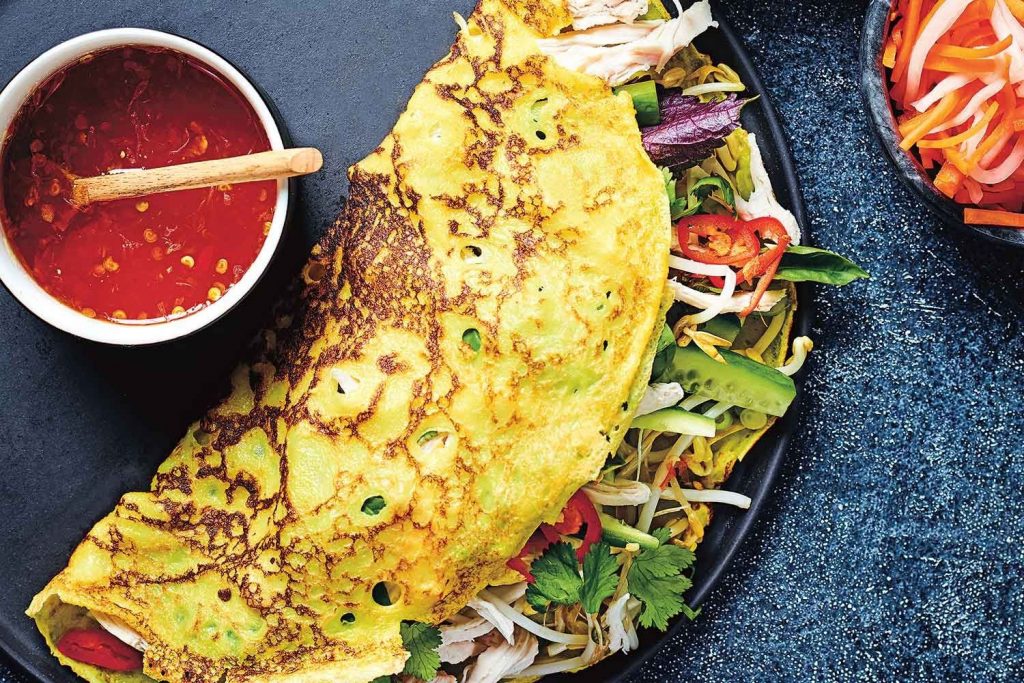
One of the best experiences in Vietnam is enjoying its rich and tasty cuisine, with French, Chinese and Japanese influences, where they stand out:
Pho Bo: classic dish with white noodles, slices of beef and onions, coriander, mint, lime, soy or chili, all in a rich and spicy soup broth.
Pho Ga: like the previous one, but with chicken.
Canh Chua Ca: hot and sour soup with pineapple and chili.
Banh Xeo: Pork and shrimp pancakes, with lettuce leaf and lime and chili sauce. There are also vegan ones.
Cha Ca: white fried fish with curucuma, noodles, dill and peanuts.
Nem Ram: spring rolls with vegetables wrapped in rice paper. Cha Gio, is that with minced pork and vegetables, and Goi Cuon, with vegetables and prawns.
Bun Bo Hue: beef noodle soup typical of Hue.
Cau Lau: rice noodles with pork, soybean and vegetables.
White Rose: They are like rice flour ravioli cooked with prawns.
Chao Tom: Barbecued shrimp pasta, typical of Hue.
Bun Cha: typical of Hanoi, it is a pork soup with rice vermicelli and green sprouts.
Bun Rieu: tomato-crab noodle soup served with crab balls and tofu.
Bocatas vientamitas or Banh: these are baguettes but with rice flour and filled with meat and vegetables.
Great variety of tasty fruits: Lime, Durian, Mangosteen, Grapefruit, Banana and the delicious Passion Fruit.
Filtered Vietnamese Coffee and the Egg Coffee, a delicious latte with egg.
Beers from Vietnam: Bia Ha Noi, Saigon, Tiger, Huda beer.
[pt_view id=”0f779caxba”]